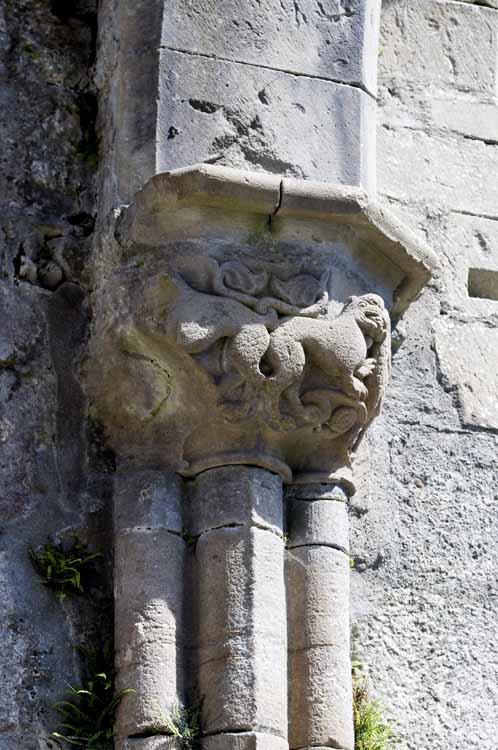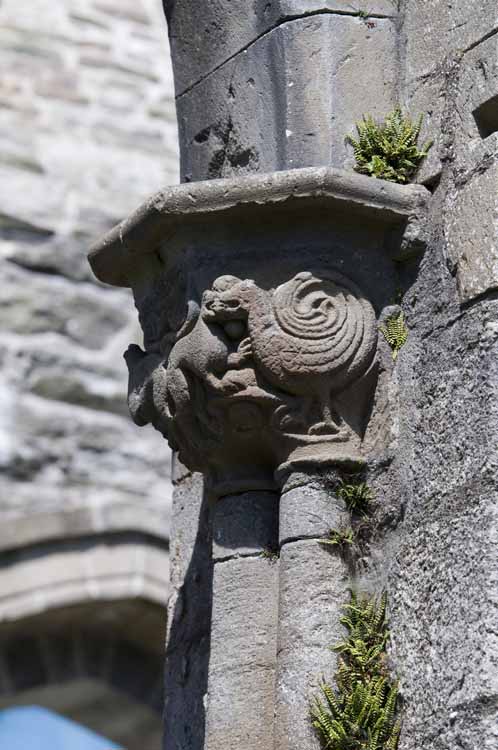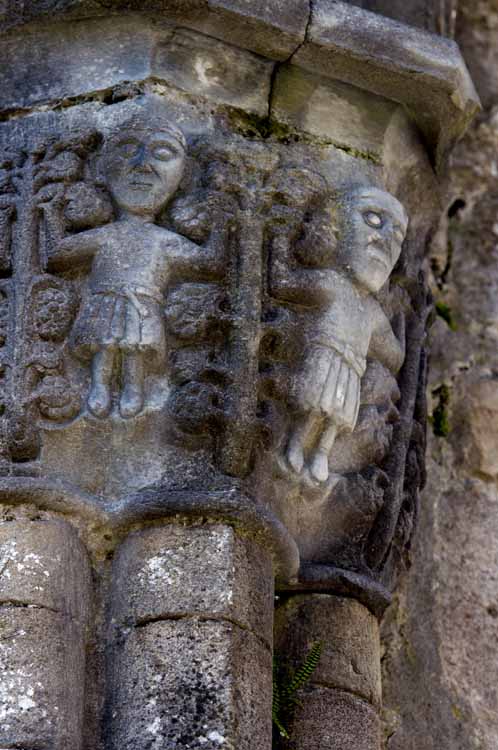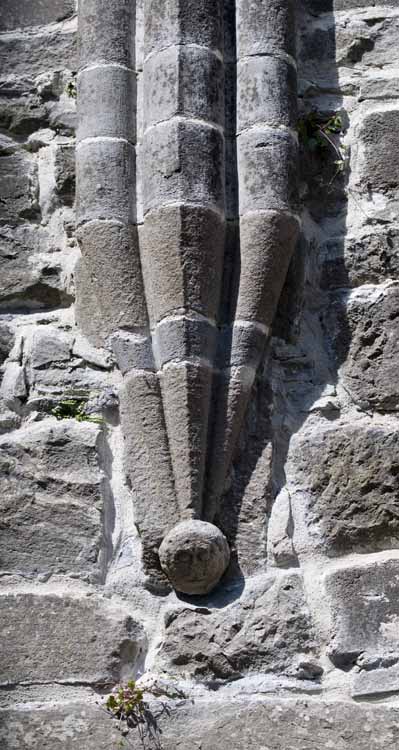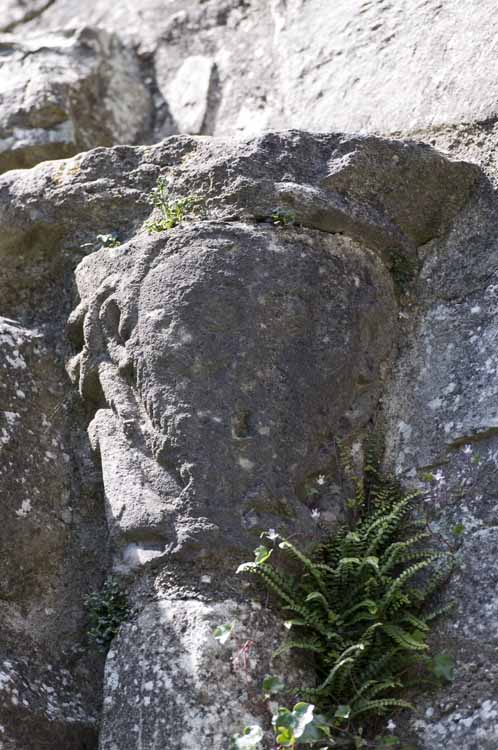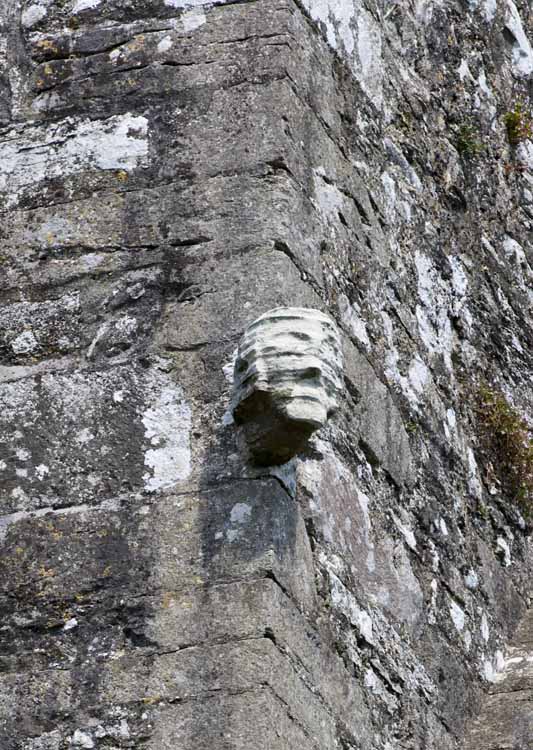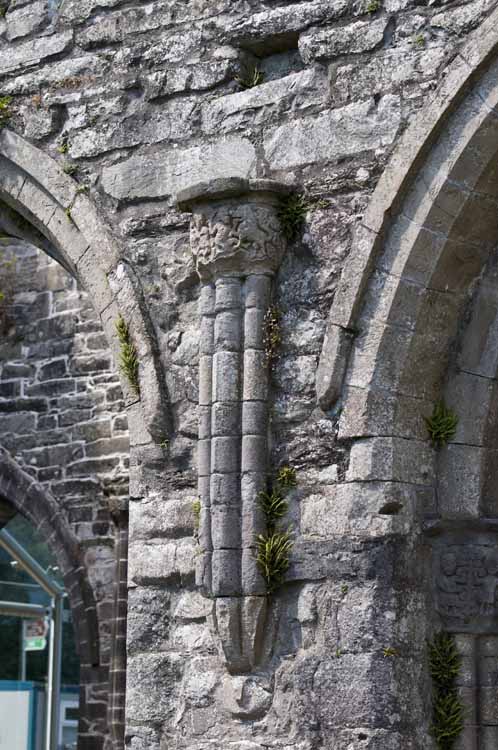

Some of the animal and human figure carving in the Cistercian Abbey at Boyle, County Roscommon, Ireland. When the nave was completed, approximately 40 new capitals were needed, both for the newly constructed piers and for the corbels, which had been inserted along the building to support the roof. Some of the capitals have trumpet scallops, suggesting a West of England influence. However, the majority were decorated with a range of floral motifs, similar to the transitional work from Late Romanesque to Gothic, termed the "School of the West" style, in the abbeys of Cong and Ballintubber and Athenry Castle. The term “School of the West” was coined by Harold Leask to a group of a dozen churches built west of the River Shannon in the first half of the 13th century which have architectural details that cannot be found in contemporary buildings in the rest of Ireland. In some ways this term has been used to stress the conflict between ‘native’ Cistercian houses and those founded by the Anglo-Norman invaders and the vernacular and Cistercian influence in the west of Ireland abbeys. Seven capitals were ornamented with animal and human figures. One particular design consists of small men standing between trees and holding on to vine branches, with bunches of grapes, in a rather stiff fashion and dressed in roman style clothing. Another depicts a confrontation of two dogs and a pair of cockerels. These designs are out of keeping with the usual simplicity of Cistercian building, suggesting that the spirit of austerity was weakening as time went on. The west wall of the church with its single lancet window is early Gothic in style. The numerous bandings on the shafts at the sides of the window are reminiscent of Christchurch Cathedral, Dublin and suggest that they are the work of someone actually connected with the work at Christchurch, Dublin.
Contrary to normal Cistercian practice of austerity, it is clear from the unusually large western piers of the crossing that a central tower on the church was planned from the outset. At Boyle, and also at Corcomroe, there is such as degree of non-conformity that it must have been more than a rare example of an individual stone mason's creativity. It is thought, by Stalley, that these capitals were carved between 1215 and 1220. There are similar carvings at Ballintober Abbey which are more developed stylistically than at Boyle and are thought to date slightly later, c. 1216 - 1225.
